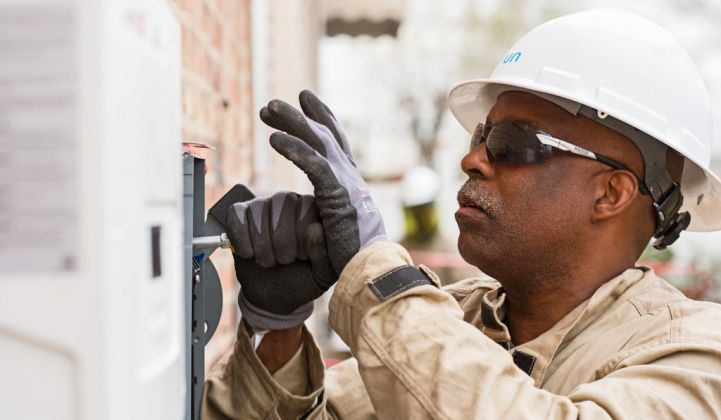Even as the coronavirus pandemic sent the U.S. economy into free fall this spring, the energy storage industry delivered its second-best quarter ever in terms of megawatts installed.
Despite social-distancing orders, more customers than ever before added batteries in their homes to store solar power and provide backup power amid hurricanes, wildfires and other types of grid outages.
Residential storage companies installed 48.7 megawatts/112 megawatt-hours in Q2, up 10 percent from the previous quarter, according to the new Energy Storage Monitor report released Thursday by Wood Mackenzie and the U.S. Energy Storage Association. That marks the fifth consecutive quarterly deployment record for residential storage, something that larger battery segments have never achieved.
That’s surprising given that home batteries are almost always sold as an add-on to rooftop solar, and the leading rooftop solar installers took a hit on sales in Q2 as face-to-face business ground to a halt due to the pandemic. Several leading installers saw solar deployments drop by 20 percent or more from Q1 to Q2; home battery installations bucked that trend, led by growth in California and Hawaii.
"Even as the solar market has slowed down slightly, the pairing rate for storage continues to grow," said Daniel Finn-Foley, energy storage director at WoodMac and an author of the report.
Commercial and front-of-meter energy storage activity tends to swing wildly from quarter to quarter due to the small number of projects happening in those markets. In Q2, commercial installations were down, while front-of-meter installations surged.
That was largely due to one project: The first phase of LS Power’s Gateway battery came online in June, adding 62.5 megawatts to California’s grid. The developer kept going and raised the project’s power capacity to 250 megawatts in the third quarter, guaranteeing bigger numbers for the next Energy Storage Monitor to tabulate.
Gateway, plus projects in Oklahoma and Massachusetts, helped push total storage installations to 168 megawatts for the second quarter. That power capacity came with 288 megawatt-hours of energy storage, indicating a trend toward shorter-duration projects.
Ongoing construction efforts promise a massive second half to the year, which analysts believe will result in 2020 doubling the battery capacity installed in 2019.
"The year is going to close out in a big way," Finn-Foley said. "We’re going to top a gigawatt of storage deployed annually for the first time in the U.S. market."
2021 installations are on track to surpass 3.7 gigawatts, he added, which would yield a 7x jump compared to 2019.
The arrival of COVID-19 lowered the 2020 outlook by 500 megawatt-hours, however, in the previous edition of the ESM. At the time, commercial and industrial installations were forecast to fall 44 percent, and residential to drop 39 percent, compared to pre-pandemic growth expectations.
Residential storage exceeded expectations in Q2, despite the most intense lockdown of the U.S. economy. But overall, slowdowns due to the pandemic have pushed the 2020 outlooks down by another 200 megawatt-hours in the latest forecast. The market is still growing fast, just not as fast as it was expected to if a global pandemic hadn't come to pass.
The industry has a silver lining in the five-year forecast, though: The projected cumulative capacity through 2025 grew 7 percent since the last Energy Storage Monitor, based on new project commitments.
***
A free executive summary of Wood Mackenzie & the Energy Storage Association's Q3 2020 Energy Storage Monitor report is available here.




